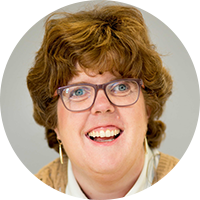Testing and training: how we’re making Sightsavers more accessible


Our commitment to inclusion
Learn how Sightsavers’ Social Inclusion Working Group promotes our goal of diversity in the workplace
Inclusion at SightsaversSightsavers Organisational Inclusion Coordinator Kate Bennell is involved with testing our systems, processes and content to make sure they’re accessible, especially for people who are visually impaired. Here she explains Sightsavers’ approach.
I use a screen-reading software called JAWS, which converts text into synthesised speech, to carry out testing of online and offline content (web pages, documents, presentations). Following a talk by accessibility specialist Joshua Marshall, we’re revising our system testing approach this year and putting together a formal testing checklist, which looks at all elements of accessibility, so that we can say what percentage of a product is accessible.
We started by looking at the Web Content Accessibility Guidelines (WCAG), but realised that this was too complicated to meet our needs, so we wrote our own checklist based on nine key principals:
- Text
- Images and illustrations
- Graphs and tables
- Hyperlinks
- Structure and design
- Formatting
- Videos
- Navigation
- Access with keyboard only.
Each core element that we are testing now has a number of questions against which I test accessibility with the screen reader. I give it a pass or fail and a percentage score to show how many passes or fails there are. At the end of each test page we have a notes section for recommended improvements that could be made to raise the scores.
I’ve used the new system testing checklist this week on sample pages from our new website. Using the new approach, I was able to identify images without alt text, text boxes that were not recognised as points where the user is expected to key in some text, buttons that were not read by the screen reader and hyperlinks that didn’t work with the screen reader. I provided feedback on these elements to my colleagues in the web design team who are making changes to enhance the accessibility before we launch the website.
More news about accessibility…
We’ve recently bought a Roger pen for the office – this is an all-inclusive wireless microphone for use at meetings and conferences to assist people who use a hearing aid.
We’ve also invested in a deaf awareness and basic British sign language training course for members of the inclusion working group provided by Sussex Deaf Association. On our one-day course we learned how to finger spell the alphabet and how to sign lots of words, ask questions and sign a few short sentences too.
Finally, we’ve put together a disability awareness training session for all members of staff, in both Haywards Heath and our programme offices around the world. The course aims to raise organisational awareness and knowledge on disability language (and the words and phrases we prefer to use and those to avoid at Sightsavers), models of disability, accessibility barriers/challenges, and our work around inclusive development.
We are evolving all the time – and we want to keep challenging ourselves, keep supporting staff to develop new skills, and keep learning how to be a more disability-confident and disability-friendly organisation.
Author
 Kate Bennell is the organisational inclusion coordinator at Sightsavers UK. Severely sight impaired herself, she coordinates the Social Inclusion Working Group and champions accessibility.
Kate Bennell is the organisational inclusion coordinator at Sightsavers UK. Severely sight impaired herself, she coordinates the Social Inclusion Working Group and champions accessibility.
LinkedIn
Read about our work on disability
Disability rightsMore from the Social Inclusion Working Group

Susie Rodgers: from the Paralympics to international development
Sightsavers' Kate Bennell reflects on Susie Rogers' lunchtime talk about her experience as a Paralympian swimmer before joining Sightsavers.

How we make our work inclusive
Ensuring your work is accessible and can be understood by everyone should be an essential part of all your communications. Here’s a rundown of how to do it.

A history of inclusion
From the Old Testament to the Paralympics and beyond: we track the progress of disability rights and accessibility from ancient times to the present day.